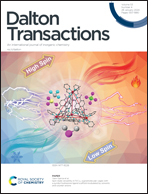Ye Olde supramolecular chemistry, its modern rebranding and overarching trends in chemistry
Abstract
We can describe current contingency of supramolecular chemistry as “post-halogen bonding”, with clear reference to the success of the σ-hole model and the halogen bond concepts. This phase is characterized by a strong push towards a new nomenclature for non-covalent interactions, a group-by-group one focusing on the electrophile. As such nomenclature increasingly meets IUPAC endorsement, its proposers report resistances to such ideas, especially in the inorganic and coordination chemistry communities. The whole issue has been generating considerable debate in the last decade. Herein we fully embrace such discussion in the hope of involving a larger share of the relevant communities. Alternative descriptions are here reevaluated, novel views reconnected with older ones, and it is ultimately questioned whether the introduction of such a nomenclature and its subtending ideas would be beneficial. The themes of appreciation of general trends in chemistry, of counterintuitive interactions, of positioning of novel nomenclature with respect to existing ones, and of the extension of group-by-group naming from main block to d-block elements – as key and currently unresolved issues – are discussed. Equivalent, alternative and arguably more comprehensive descriptions are tentatively given, in the hope to overcome controversies together in the pursuit of higher rewards: a comprehensive shared view of supramolecular forces and a common language to express it.

- This article is part of the themed collections: 2024 Frontier and Perspective articles and Articles behind our 2024 journal covers


 Please wait while we load your content...
Please wait while we load your content...